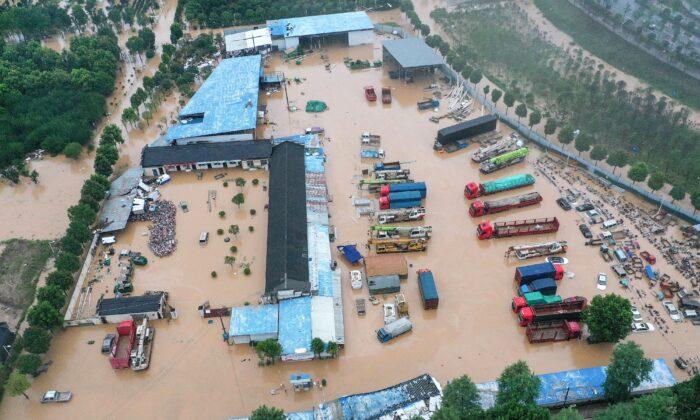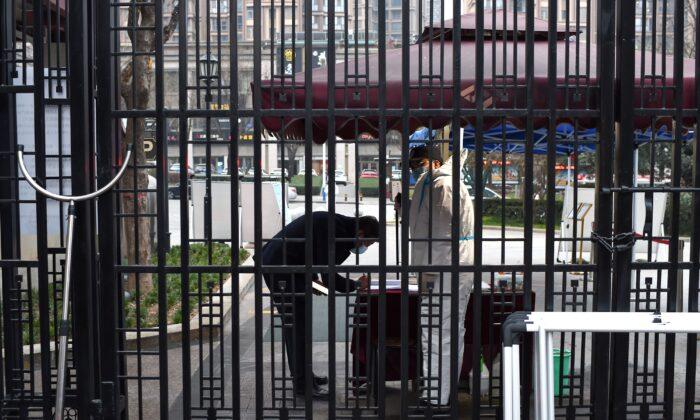Lujiang County, Anhui Province was recently submerged in 8-meter-deep (about 26.25 feet) floods after heavy rainfall.
While local authorities and state media said a local dike broke due to the torrential rains, causing the flooding, some citizens said they believe authorities intentionally damaged it to divert stormwater to the county in the name of protecting urban areas.
The Situation
Chen Liang (alias), a resident of Tongda town, Lujiang county, told The Epoch Times: “The water has not receded. There’s still about 2 meters (6.5 feet) of water in our house, and the first floor is still underwater...Now, the government is saying they’ll drain it [with pumps]. As for when it will be gone completely, who knows?”Two villages, Shidaxu and Niuguangxu, about 30 kilometers (about 18.6 miles) apart, were also immersed in floods, Chen said. Tens of thousands of people in Shidaxu were displaced from their homes and forced to stay at rentals outside the village for the time being.
Chen has been living in a rental for more than 40 days. So far, authorities provided a bag of rice and a bottle of cooking oil, but nothing more.
He, his wife, and two children are living in a 20 square-meter (about 215 square feet) apartment, with rent at 500 yuan ($73) a month.
He said it has been difficult providing for the family while having to support his parents and grandfather.
Chen is a small business owner with two stores, but one of them was completely flooded. He estimated that he suffered about four to five million yuan ($586,555-$733,193) in losses.
“I spent most of my life savings on the store. There are also debts and loans...us ordinary people have unspeakable hardships,” he said.
He is also worried about the damage to his house, which he built.
Authorities’ Evacuation
Chen recalled that on the night before the flooding on July 22, local authorities asked residents to evacuate, but residents were not allowed to take anything with them.According to Chinese media 21st Century News, on July 22, the water level at the local Chaohu Lake had soared from 8.80 meters before the rainy season to a maximum of 13.43 meters, setting a historical record. The lake’s water volume increased by nearly 3.6 billion cubic meters, which is double its normal water capacity.
Under normal conditions, the lake water would diverge into the Yangtze River. But due to flooding, the lake overflowed.
At around 8 a.m. on July 22, local media reported that the dike close to the lake had collapsed.
Chen suspects that authorities broke the dike on purpose—since they knew to evacuate residents before the flooding began.
“It’s hard to swallow...Why didn’t the government admit that the water was released, but talked about a dike collapse? Why? We have made such a big sacrifice. Don’t we deserve an explanation?” Chen said.
He added that there were about 100,000 mu (16,474 acres) of fertile land in the two villages, which are now submerged. The local economy relies mainly on growing rice and fisheries, he said.




